Reviews
John Carpenter
USA, 1994
Credits
Review by Glenn Heath Jr.
Posted on 03 May 2012
Source New Line DVD
Related articles
Reviews: In the Mouth of Madness by Megan
Categories Favorites: Transformations
We fucked up the air and the water. We fucked up each other. Why don’t we finish the job and flush our brains down the toilet.
John Trent
The gears of physical and artistic transformation are equivalent to war machines in John Carpenter’s In the Mouth of Madness, deceptive weapons connecting manmade hysteria with the permanent splintering of mass ideology. Printing presses, televisions, film projectors, and radio speakers deliver destructive psychological messages on a global level, enabling a diabolical physical shift perpetrated by the devil himself. While these lessons of darkness are transplanted to Earth through the words of hack horror writer Sutter Cane, Carpenter finds the true blame for global apocalypse with an extremely gullible and disoriented postmodern populace, the proverbial “them” willing to jump at the latest pop culture phenomenon or craze. In all its loony batshit glory, In the Mouth of Madness shows that the world will end not with a whimper or a bang, but the stroke of a typewriter key.
Blurring fantasy and reality is a matter of perspective in Carpenter’s disarming vision, something book editor Linda Styles puts best when she tells arrogant insurance claims agent John Trent that “sane and insane could easily switch places if the insane became the majority.” In the Mouth of Madness pushes this idea to its tipping point, embedding Trent’s subjective experience and traumas into a larger global nightmare. The world becomes one big insane asylum, a fact foreshadowed in the moment we see Trent being dragged into a sanitarium kicking and screaming. Through Trent’s eyes we realize that our transformation from human beasts to other-worldly monsters is not only represented by the growing unrest witnessed on the fringes of Carpenter’s brilliantly expansive frame, but in the way those hellish images project back at the characters themselves in the form of jarring montages. We are, in essence, able to watch our own madness unfold in real time, transposed via every potential artistic medium for maximum viewing pleasure.
When examined alongside Carpenter’s canon as a whole, In the Mouth of Madness feels like an honorary sequel to 1982’s The Thing, both an expansion and revision of that film’s obsession with the horrors of transformation. While both films focus on an evil hiding in plain sight and the male protagonists helpless to stop its effortless spread, In the Mouth of Madness is more of a scathing critique on the way react to mass hysteria, using traditional genre tropes (the ax murderer, creepy old women) to examine how personal forms of communication like art and language can inspire/breed physical violence on a societal level. That most of the bloodshed occurs within a heightened dream state only further proves Carpenter’s interest in blurring the lines between conscience and sub-conscience, waking life and waking death.
The opening of In the Mouth of Madness is particularly interesting in that the synthesizer musical score dominating most of Carpenter’s work is replaced by a rock-infused soundtrack playing over revolving mechanisms, turning rotors, and swirling parts of a printing press operating on all cylinders. Here, Carpenter immediately establishes a link between the physicality of production and the art of manipulation, literal translations of memory haunted by evil subtext. Whereas The Thing imagines a very personal nightmare of isolation, In the Mouth of Madness creates a template to witness collective distrust and uncertainty, where Cane’s novel creates glassy-eyed numbness and a different prism with which to frame the world’s terrible rebirth. Trent orates his mad-hatter story in flashback to another assayer of truth inside a padded cell, allowing Carpenter’s cutting sense of humor to flourish, especially since the film values all kinds of absurd performance as a bridge between the devil and psychological madness. There is never any salvation for Trent, only the hope that his expression will receive an audience willing to listen.
Since the breadth of In the Mouth of Madness concerns a shit pulp novel turning the world’s population into a raving band of disoriented lunatics, the idea of words and imagery as tools for change is essential to the film’s metaphor of physical transformation. The warped prose in Sutter Cane’s novels begin to take effect on Trent when he and Linda travel by car to find the disappeared author somewhere in deep New England. Instead of arriving at their predetermined destination, Linda and Trent experience a transformation of altered states, a jump from one arena of madness to the next. Their car seems to be floating on clouds, followed by flashes of light, shocking imagery, blood splatter, and more. Seconds later, the two arrive in Hobb’s End, the fictional town where Cane’s latest book unfolds. The power of cinema editing, most notably a Godardian sense of color and pacing, provides the gateway for Trent and Linda to physically transform into a new shade of reality.
Unlike The Thing, potent montages like these provide In the Mouth of Madness with a racing pulse, making each moment feel like a potential endgame. “It’s about the end, of everything,” Stiles tells Trent as they traverse the sparsely populated Hobb’s End looking for Sutter Cane. Their search leads them right into the heart of darkness, where close proximity to shifting paintings, handcuffed naked men, and the Book to end all books causes even more disjoined levels of fragmentation, not only for the image but for the sound design. During the film’s resoundingly nutty climax, Trent walks through a wall-size page of Cane’s novel, the CG paper peeling away to reveal a far more frightening artifice.
In its final moments, In the Mouth of Madness attains a level of terror on par with the great Horror films of all-time, a confirmation that Carpenter’s tortured hero has pivoted 180° to face his own self-induced projection of hell. Seething with twitchy movement, Trent watches his own story get projected in an empty movie theater, laughing manically at the absurdity of his own decimation. It’s as if he finally understands that his part in this collective tragedy has been that of a termite, helping to hollow out popular genre conventions and archetypes to unveil the purposelessness of it all underneath. When taken inside this context, In the Mouth of Madness becomes one of the more cynical, yet sobering warnings against mass consumerism of the last few decades, a messy formal example of cinematic transformation, but also a reverse shot of our own possible demonic evolution.
More Favorites: Transformations
-
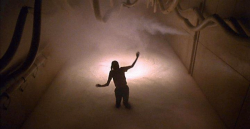
Altered States
1980 -
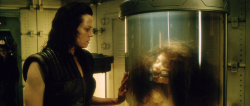
Alien: Resurrection
1997 -
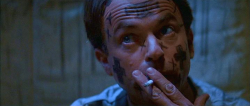
In the Mouth of Madness
1994 -

Now, Voyager
1942 -

Honey, I Shrunk the Kids
1989 -
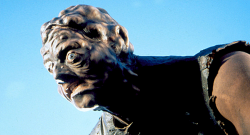
The Toxic Avenger
1984 -
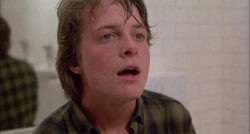
Teen Wolf
1985 -

Teen Wolf Too
1987 -

An American Werewolf in London
1981 -

The Curse of the Cat People
1944 -
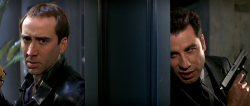
Face/Off
1997 -

That Obscure Object of Desire
1977 -

Now, Voyager
1942 -
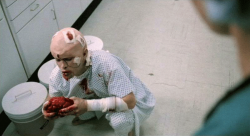
From Beyond
1986 -
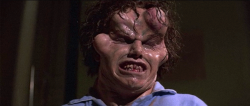
The Beast Within
1982 -
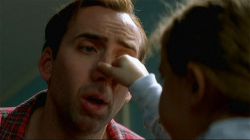
The Family Man
2000 -
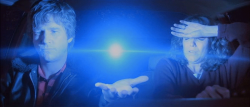
Starman
1984
We don’t do comments anymore, but you may contact us here or find us on Twitter or Facebook.



